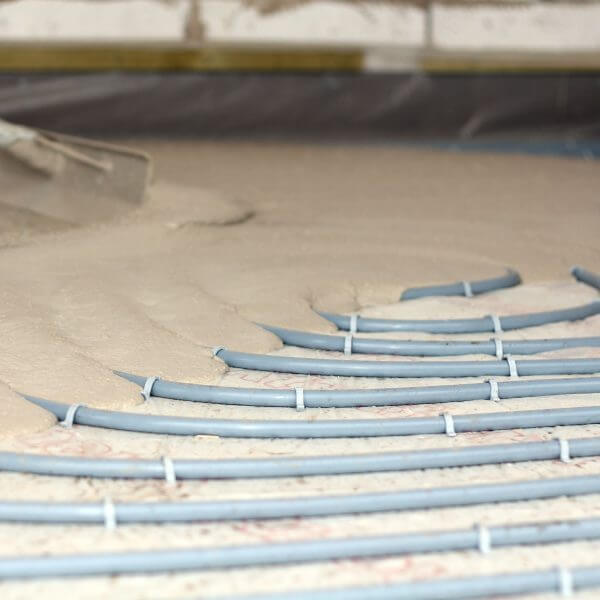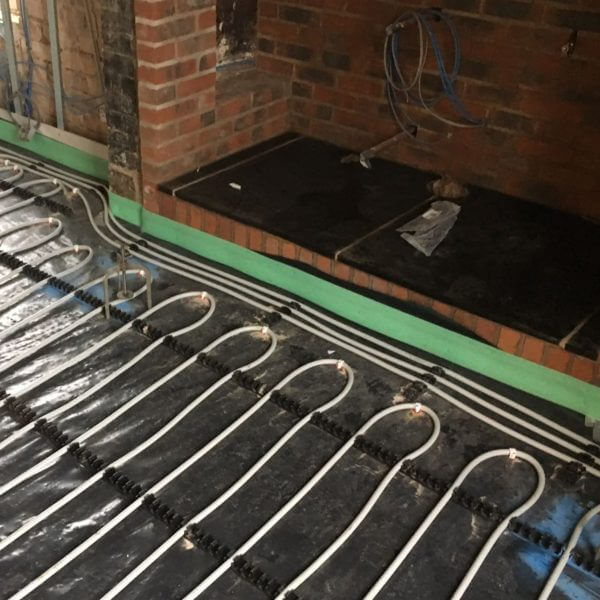Underfloor Heating Information

There are a great deal of benefits associated with a wet/hydronic underfloor heating system. Associated with luxury and comfort, underfloor heating systems are a wonderful addition to any property. Although you may have heard about the various heating options and systems that are available for your property, you may have some questions about underfloor heating as well as the different underfloor heating systems that are available.
Easyflow has offered underfloor heating systems for many years and is one of the market leaders in underfloor heating systems, as well as using liquid screed alongside the installation of your underfloor heating system. In this article, we have compiled some of the most commonly asked questions around Liquid Screed and answered the most popular questions around this underfloor heating system.
If you are interested in finding out more about underfloor heating or want to arrange an underfloor heating installation then enquire with Easyflow using our online contact form on our website or telephone our team now on: 01743 298001
How Does Underfloor Heating Work?
Underfloor heating distributes hot water through a circuit of pipes beneath the floor. A manifold combined with individual thermostats control the flow and temperature of the water to efficiently heat individual zones when it requires heat.
Underfloor heating is a highly effective and efficient method of heating the floor of a room or even the entirety of your property. The system is a great way to warm floors during a cold day and can be situated beneath most types of flooring.
Why is Liquid Screed Often Used Along With Hydronic Underfloor Heating?
Liquid screed is often the preferred flooring material when you are looking to install a hydronic underfloor heating system. The many types of liquid screed that are available supersede traditional sand and cement screeds in many ways. Liquid screed, for example, offers double the thermal conductivity as sand cement screed (2.2W/mK thermal conductivity vs 1.1W/mK thermal conductivity), which makes your underfloor heating system more energy efficient.
What are the Differences Between Electric and Hydronic Underfloor Heating?”
Electric underfloor heating systems are relatively inexpensive to install, however it’s important to bear in mind that these systems have high running costs (due to electricity costs). You also have to be wary of placing heavy furniture on top of an electric floor system and arrange furniture specifically for maximum efficiency. In comparison, hydronic underfloor heating systems have extremely efficient running costs, especially when used with liquid screed flooring. Although the initial costs are higher for the installation process, the system runs more effectively and efficiently.
Is Underfloor Heating Better Than Radiators?
Underfloor heating systems distribute heat more evenly across rooms, use less energy and can provide long-term cost savings compared to radiators. Because heat rises naturally, you can expect more even heat distribution from your underfloor heating system compared to more traditional heating methods. Radiators can also be noisy, and the appearance may not combine well with the aesthetic of rooms within your property.
What are the Best Settings for Underfloor Heating?
Underfloor heating systems should be set at 20°C as this is the most common comfortable temperature. You may turn it up if you do not find this temperature comfortable, or down if you wish to save energy.
The typical way to control or regulate the temperature of your underfloor heating system is through a thermostat. We can supply Heatmiser Neo thermostats which are compatible with smart systems which allow for the intelligent control of your underfloor heating system.
Does Underfloor Heating Need Servicing?
Underfloor heating systems (if installed correctly) should require very little to no maintenance whatsoever. The heat source and manifold should be inspected annually by a heat engineer experienced with underfloor heating systems and the manifold may need to be bled of any air accumulated within the system.
Should the underfloor heating system be installed incorrectly, then this can cause issue,s and the system will require maintenance to rectify the issue. This is why it’s important to work with a qualified, professional and experienced underfloor heating installation company such as the professional team at Easyflow.
Which Rooms Can Benefit from Underfloor Heating?
From your living room to your bathroom, there are many areas in which you can enjoy your underfloor heating system. They can be a wonderful addition to your bathroom when you step out of your shower and are greeted with a lovely warm floor. In essence, an underfloor heating system can be installed around your property and can even be installed in areas such as garages.
What Flooring is Suitable for Underfloor Heating?
Carpet, vinyl, tiles, and engineered wood can all be suitable for an underfloor heating system, provided that it has been designed for use with in-floor heating. This will provide maximum heat transfer and reduce issues like hot spots.
Does Underfloor Heating Take a Long Time to Heat Up and Cool Down?
A good system with intelligent controls that are correct for your requirements allows you to pre-programme heat up times which you can turn on before hand. This makes sure that your underfloor heating system is at the correct temperature exactly when you need it. If you are using intelligent controls then these can even build a pattern of your heating requirements and this can also be used for cooling down periods.
Does an Underfloor Heating System Guarantee Even Heat Distribution?
Your underfloor heating system effectively operates by turning your entire floor area into a radiator. Because your floor has a large surface area, heat rises steadily upwards, ensuring that there is even heat distribution and no draughts or cold spots in the room. This makes your room very comfortable and again heats the room more evenly than traditional radiator-based central heating systems. You can even use underfloor heating systems in combination with other heating systems if you still wish to utilise radiators alongside your underfloor heating system. Underfloor heating systems also work with heat pumps, which are ideally suited for producing the low temperature that is required for your underfloor heating system to operate.
Install Your Underfloor Heating System With Easyflow Today
Underfloor heating is a specialist job, and our specialist engineers know exactly how to install your pipework at the correct centres for your heat source. It’s therefore highly recommended to consider installing your underfloor heating system with Easyflow, as costs that are cut in the preparation and installation of the underfloor heating system will be costly in the future.
Working with Easyflow, we can help you to install your underfloor heating system and ensure that your underfloor heating system is working correctly, allowing you to enjoy underfloor heating in your property.




Where To Find Us